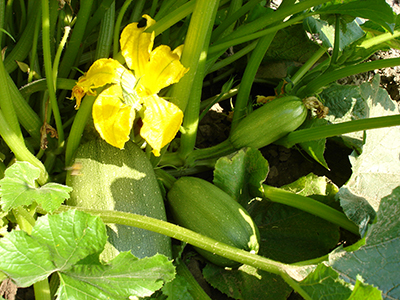Cucurbita pepo L. (Cucurbitaceae) cv. Makaronowa Warszawska



| ENG | Spaghetti squash |
| SK | Tekvica špagetová |
| CZ | dýně špagetová |
| PL | Dynia makaronowa |
| HU |
Using
Winter pumpkin fruit have a high - carotenoids and low content of fat. Seeds are a very good source of nutrients, including minerals (Zn, Cu, Fe, Mg), proteins and healthy fats. Fruit rind, flesh and seeds contain unique phyto-constituents belonging mainly to cucurbitosides, multiflorane-type triterpenoids, carotenoids, ent-kauranetype diterpene, and cucurbitaglycosides. Many pharmacological studies have demonstrated hepatoprotection, inhibit benign prostatic hiperplasia, antioxidant, anticancer, antimicrobial, antiinflamatory, antidiabetic, and antiulcer activities supporting its traditional uses of this vegetable.
| I. | II. | III. | IV. | V. | VI. | VII. | VIII. | IX. | X. | XI. | XII. | |||||||||||||
| Sowing (greenhouse) | ||||||||||||||||||||||||
| Sowing (field) | ||||||||||||||||||||||||
| Planting | ||||||||||||||||||||||||
| Harvest | ||||||||||||||||||||||||
Botanical description and occurrence:
Genus Cucurbita L. is native to Americas and was dispersed all over the other continents by transoceanic voyagers around the turn of the 16th century. ‘Squashes’ refers to Cucurbita spp. cultivars bringing not round fruits. They are usually annual, frost-sensitive, climbing or bushy pants, with large, palmate leaves. Plants are monoecious, with large, yellow flowers also used as a vegetable. They vary greatly in size and colour of fruit which are often used for decorative purposes. ‘Makaronowa Warszawska‘ belongs to group Spaghetti squashes. It brings a large, oval, light yellow fruit, weighing 1.0-1.5 kg, with spaghetti-like flesh. The rind initially is green, and becomes uniformly orange when mature. The plant is characterized by relatively strong growth, bushy habit, and resistance to diseases.
Why to have the plant in your garden:
The most important feature of ‘Makaronowa Warszawska‘ is the pulp’s consistency. After thermal treatment (cooking or roasting), pulp breaks down into yarns, which resemble spaghetti noodles. They are very tasty, and - at the same time - may be main ingredients of dishes prepared both spicy and sweet. Serve for example with marinara sauce, butter or olive oil.
Text:
Dr. Agnieszka Sekara, University of Agriculture in Krakow, Poland
Photo:
Dr. Agnieszka Sekara, University of Agriculture in Krakow, Poland

